How Does A LCD Projector Work?
An LCD projector works with an optical light engine, which incorporates three small LCD (Liquid Crystal Display) panels, one each for Red, Green and Blue paired with a light source (lamp, LED, Laser Phosphor, Discrete RGB Laser), various filters, mirrors and a prism to create the image.
Parts Of An LCD Projector
The inner workings of an LCD projector are made up of a number of components. A light source, regular mirrors, dichroic mirrors, 3 LCD panels (RGB), a dichroic combiner cube/prism and a lens. If you’ve got a LED or laser based LCD projector you’ll also have a phosphor wheel.
Light Source
Typically the light source of an LCD projector can be bulb based, or laser based.
With a bulb based projector the light that comes from the lamp is white light. White light is made up of all the different colors. In order to use that white light to create the colorful image you see on the screen the light needs to be broken up into the individual colors red, green and blue.
Laser LCD Projectors
With a laser projector, the light source is typically a single blue laser. The reason a blue laser is used is that on the color spectrum it is closest to white, the cheapest and can get the brightest based on current technology.
These laser projectors feature a phosphor wheel. The phosphor wheel is made from a chemical that when the blue photons from a blue light source hit the surface it radiates yellow or white light which can then be used to create the other colors you see in the final image.
Mirrors
There are two types of mirrors used in a LCD projector.
The first are your basic mirrors. These mirrors redirect the light so it shines where it is needed to create the image. You'll typically find 3 regular mirrors in your projector.
The second type of mirrors are dichroic mirrors. These are mirrors which reflect only certain colored wavelengths of light while they let the others pass through. These mirrors split out the white light into each of its primary colors, red, green and blue. You'll typically find 2 dichroic mirrors in a LCD projector setup.

LCD Panels/LCD Chips
An LCD panel is a glass panel with liquid crystals installed into it. These liquid crystals are excited by an electrical charge sent through to each of the panel’s pixels via the wire grid located throughout the panel, around each pixel.

Every LCD panel features individual cells (pixels) which are each controlled by its own separate transistor. Each pixel’s transistor can apply an electrical current to the liquid crystal within the cell.
The number of these pixels that the LCD panel has is what determines the resolution of the display. The horizontal and vertical configuration and number of pixels in each direction is variable, based on the aspect ratio needed to be displayed on screen. Common aspect ratios used in home theater include 640x480 (SD), 1280x720 (HD), 1920x1080 (HD), 3840x2160 (UHD) and 4096x2160 (DCI 4K). There are several other aspect ratios used in the business and commercial realms as well.
In an LCD projector you’ll have three LCD panels one for each primary color, red, blue and green. This is why it’s called a 3LCD chipset.
Dichroic Combiner Cube/Dichromic Prism
A dichroic prism divides light into red, green, and blue, to form three pictures that utilize these corresponding colors from the LCD panels. The three primary colors are recombined by reflecting the red and blue light and passing through the green light.
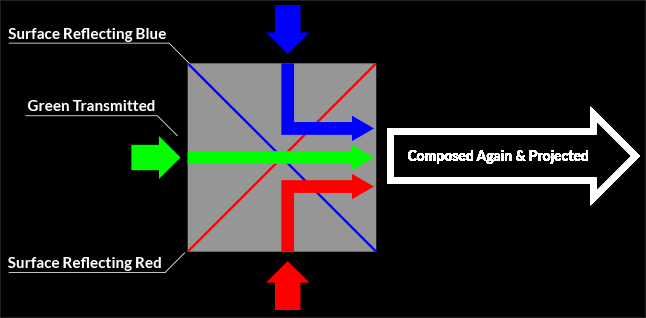
The prism is built by combining four triangular poles to create one rectangular prism.

Lens
There are typically two types of lens in an LCD projector. A polarizing lens and a projection lens.
The polarizing lens focuses the beam from the light source and polarizes the light making the beam brighter.
A projection lens is the part of a projector that magnifies the image that comes out of the combining prism and projects it onto the projection screen. These lenses typically feature multiple lens elements in certain groups based on function.
How Does A LCD Projector Create The Image On Screen?
The first step in any LCD projector is the light source. As we mentioned this can be a bulb, LED or laser powered light source. The light typically travels through an initial lens that focuses the beam to where it needs to go and polarizes the light latitudinal, which increases the brightness by 1.5x.

In the case of a laser projector the light also needs to be altered from its initial blue state to white or yellow light so it can be split into separate red, green and blue beams of light. This is done using the phosphor wheel.
The blue light passes through the clear segments of the wheel and continue on. When the blue laser hits the yellow segment of the phosphor wheel it excites the phosphor so the beam becomes yellow, which can be later split into red and green.

Once you have white or yellow light, the process between all the light sources is basically the same, though the order that the light is split may be different from one setup to the next.
The second step is the light hits the first dichroic mirror which allows the blue and green parts of the white light (which make cyan) to pass through it while reflecting the red portion of the light.

The cyan light then continues straight through the next dichroic mirror as blue, while the green light is separated and reflected towards the green LCD panel. Meanwhile the red beam of light bounces off a mirror towards the red LCD panel.
The blue beam of light then reflects off two mirrors so it properly hits the blue LCD Panel at the correct position.
The beams hit the surface of the LCD chip and create a red, green and blue image on each respective panel.
Because the colored beams travel at the speed of light, they all hit their respective colored LCD panel at essentially the same time.

How The LCD Chips Work?
Before it is usable in LCD projection, the light from the lamp has to be concentrated and polarized first. Polarization is the process of a filter which only accepts light waves traveling on the same wavelength. By polarizing the light longitudinally you increase the efficiency of the light passing through the liquid crystals, which increases brightness.
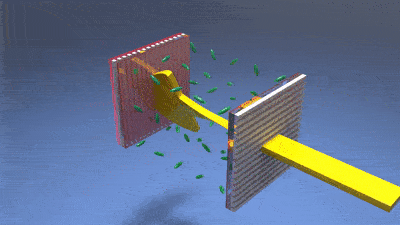
Then this polarized light shines on the LCD panel, passing through the glass substrate and the liquid crystals inside the panel. The liquid crystals, when combined with the polarizers, have the ability to block and bend light as the light travels through the crystals and filters. It does this by using electrical pulses to charge the crystals, which causes them to turn within the liquid.
The amount of charge given determines if they block the light partially or fully, depending on the amount of light needed to modulate the image the way it is supposed to be presented.
By changing the electrical charge presented to the liquid crystals, each pixel on the LCD panel can be modulated until it is completely black, or lightened until it is completely clear and transparent, meaning it allows all of the light source’s light to pass through it for full white. It can also be shaded to varying degrees of translucence to give differing shades of grays and colors.

As the electrical charge is modulated high and low, the level determines how dark or light each liquid appears. To this extent, the brightness level on every pixel for each primary color is precisely controlled to produce the final pixel's specific color and brightness level required on the screen to make up that pixel’s portion of the entire image.
After this, the polarized light leaves the liquid crystal panel and it goes through another polarizer that is aligned to block all of the light from escaping, if the light waves are traveling on a plane that the filter is designed to block.
Each panel, when combined with the other panels, can control which color each pixel will be at any one point in time. As an example, if a pixel needs to be white, then all three LCD panels let through their respective light in each one of their corresponding pixels, then the three primary colors red, green and blue are recombined by the prism from that pixel to create this pixel’s white light.
The same concept holds true if you want to create any other color within the projector’s capabilities. In this case any one of the three panels combine their respective colors in the proper mixture needed for accurate display, such as the combining of red and blue to make magenta or combining red and green to make yellow, and so on.
When the LCD panels all work in tandem together in the projector, it can paint the video image on screen in a similar way that an inkjet printer uses its individual ink dots, which are mixed and combined to make a full color image on a piece of printer paper.
Combining The 3 Images Together
After passing through the LCD chips the 3 colors of light hit the dichroic combiner cube where the image is combined into one multicolored image that is then beamed through the lens and projected onto the screen as we see it.
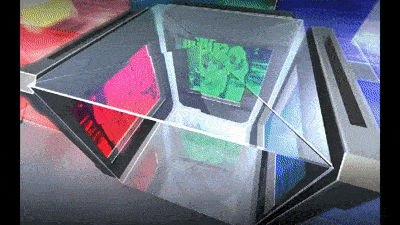
What Are The Advantages Of A LCD Projector?
- Better color brightness which is usually equivalent to its white brightness
- Mature technology, so costs are lower
- No color separation artifacts/rainbow effect
- Good lag response time for gaming
- Uses one LCD panel for each primary red, green and blue color
- Generally the ability to create better black levels and native contrast
What Are The Disadvantages Of A LCD Projector?
- Wider inter-pixel gaps due to each pixel’s wire grid
- Screen Door Effect, especially with lower resolution panels at larger sizes
- Polarizers and LCD panels can degrade over time due to UV light and heat
- LCD projectors usually don’t have a sealed optical path, resulting in possible “dust blobs” getting on the panels, appearing in the on screen image as a shadow, degrading the image.
- Because of the non-sealed design, a filter is needed and it must be periodically cleaned to maintain maximum performance and useful life.
- Harder to produce a wide color gamut without the use of color filters, unless more expensive true RGB Lasers are used.
How Much Does An LCD Projector Cost?
LCD projectors typically cost between $1,000 and $6,000. This is the price range you'd typically find in a LCD projector for home theater. For example a new model is the Epson LS12000, which is considered a high end, top of the line LCD for home theater at around $5,000.
For higher end commercial application you'll find LCD projectors like the Epson Pro G7905U and the Epson Pro L1755UNL, typically cost between $6,000 to $18,000.
The wide price range for a LCD projector is impacted by a number of factors including brightness, light source, resolution, color gamut, extra features and a few other attributes.
The only real technology competition in the same price range is a DLP chipset, so they are often compared and contrasted as to which one is best for your situation.
What Projector Manufacturers Use LCD Chipsets?
The largest developers and manufacturers of LCD technology are Panasonic, Sony and Epson, with Epson now being the largest of them all now that Sony uses SXRD for their home theater, video centric projectors and only concentrates on LCD in their business line models designed for classrooms and boardrooms.
Epson's experience in building quality projectors typically puts them towards the top of the list for best projector manufacturer.
Are LCD Projectors Better Than DLP Projectors?
You can't really say one technology is better than the other in a general sense. Each one brings its own strengths and weaknesses to the table. It is up to the purchaser and user of the projector to determine which one will work best for the application in which it will be used.
In the case of what we sell the most of, for the home theater and home media scenario, if you require high brightness while maintaining color lumens simultaneously, then an LCD is usually better for you. If you don’t need high color lumens and saturation due to some ambient light in your environment, but need high brightness, high ANSI Contrast and great sharpness and detail, then something like a DLP projector would probably be your best choice.
Also, since DLPs have a sealed light path, if your application is in a potentially dusty environment, then DLP is your best bet to avoid any dust blobs and having to clean a filter often in an LCD.
Some say that LCD gives a more film-like, celluloid type image on screen, replicating the movie theater experience more faithfully. DLPs tend to be more “digital” looking and some believe too sharp, giving a more TV-like experience.
Of course as these technologies keep maturing, the line gets thinner and thinner between differences as they each get closer and closer to image perfection.
If you're susceptible to the rainbow effect, you'll likely want to choose an LCD projector over a DLP.
Are 4K LCD Projectors Actually 4K? Are They Native 4K?
Most people want to buy a 4K projector. They want to know they're in fact getting a true 4K resolution image.
As of the time of this writing, to get into true native 4K resolution LCD projection the cost is still quite high and availability is lower. There are 4K resolution native LCD panels, but these have been reserved for the very expensive higher end models reserved for large theaters, auditoriums and other business scenarios.
For normal buyers such as the majority of our ProjectorScreen.com clients, manufacturers such as Epson still continue to use eShift technology. This is where an optical actuator is placed into the light path, after the light combining prism and before the lens, which vibrates in sequence with the split 4K image being presented to the LCD panels, causing the image to be shifted half a pixel up and half a pixel to the right in its original two-way shift design which when combined with a native 1920 x 1080 native resolution LCD panel, creates essentially a “3K” effective resolution on screen.
The newest of the 4K capable home theater LCDs, the Epson LS12000, uses the same 1920 x 1080 LCD panels with a new version of this eShift technology where instead of shifting just two times up and to the right, it shifts in four directions, up left, up right, bottom right and bottom left. This now enables you to get true UHD 3840 x 2160 resolution on screen, with each pixel being addressable, effectively the same as you can get with a native 4K design at a much cheaper cost and smaller package.
History Of LCD Projectors
The history of LCD projectors begins in Prauge, all the way back in 1888 when Friedrich Reinitzer discovered the liquid crystalline nature of cholesterol extracted from carrots. That's right, you have carrots to thanks for the LCD projectors we enjoy today!
Fast forward a few decades when experiments using liquid crystals to create a video image started in 1968 with John A. van Raalte at the RCA Laboratories. The first functional LCD projector was built by Peter J. Wild at Brown Boveri research in Swizerland. He filed the first patent in 1971.
However, it wasn't until 1984 that Gene Dolgoff in New York, fixed the issues of it's predecessors and invented the LCD projector as we know it today. Dolgoff's invention reduced the "screen-door effect" and greatly reduced the light loss making his projectors actually useable for movie watching. He then went on in 1988 to start the company Projectavision, Inc. as one of the world's first companies dedicated to making LCD projector. He later licensed the technology to global companies like Panasonic, Samsung, Epson and Sharp.

Dolgoff along with Leon Shapiro to co-developed the ANSI standard for measurement of brightness, contrast, and resolution of electronic projectors.

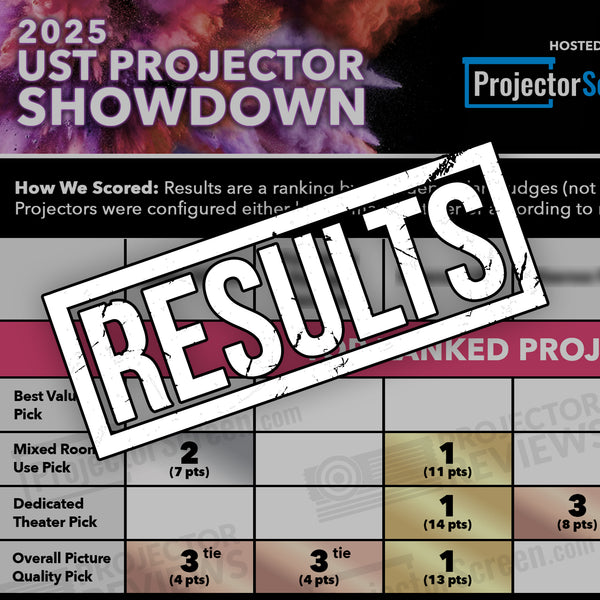



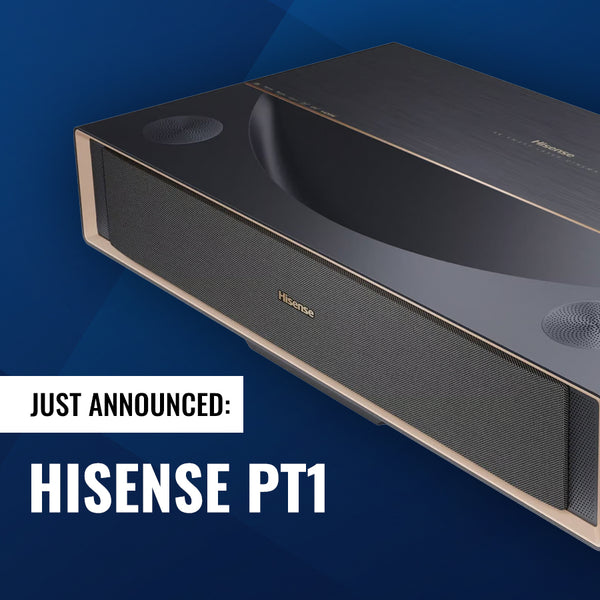
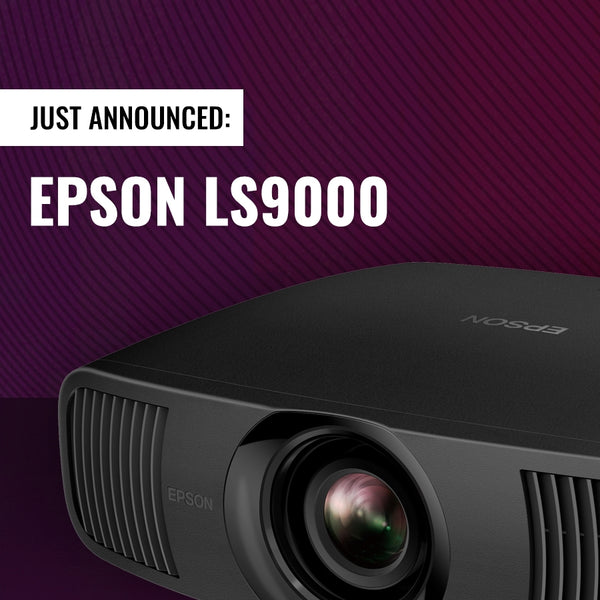
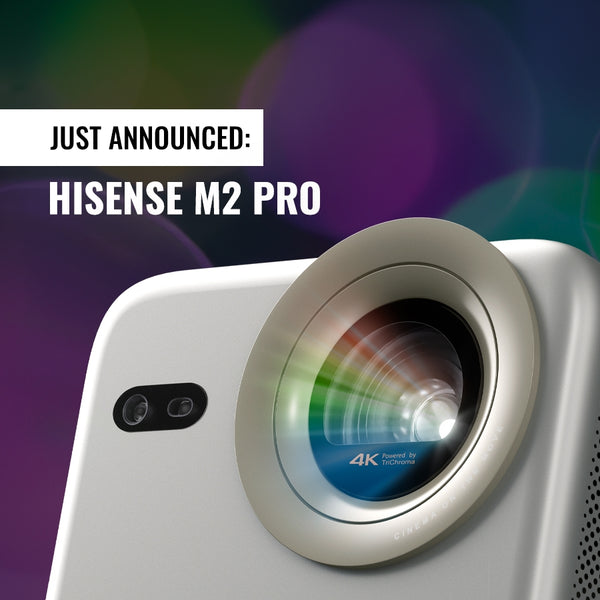
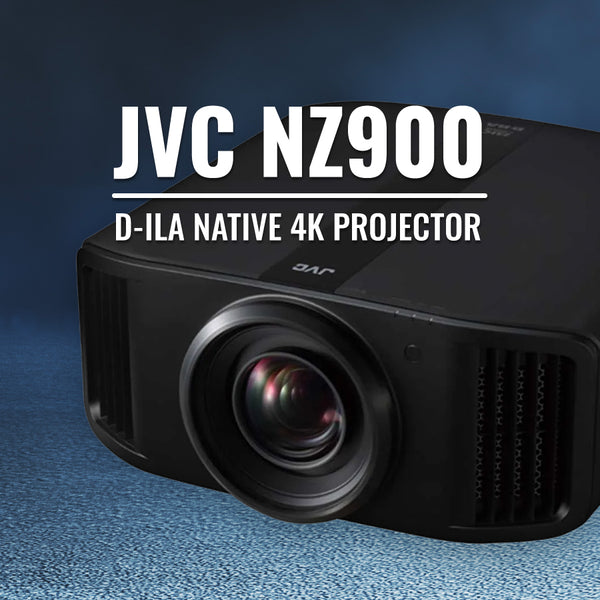
Than you very much for detailed explaination, very help full , good images and GIFs
Kaivalya Shitalbhai Shah